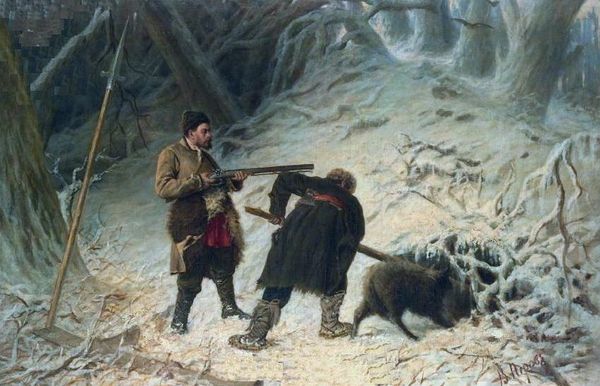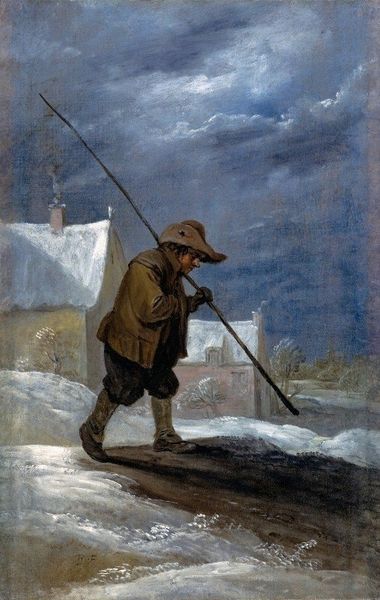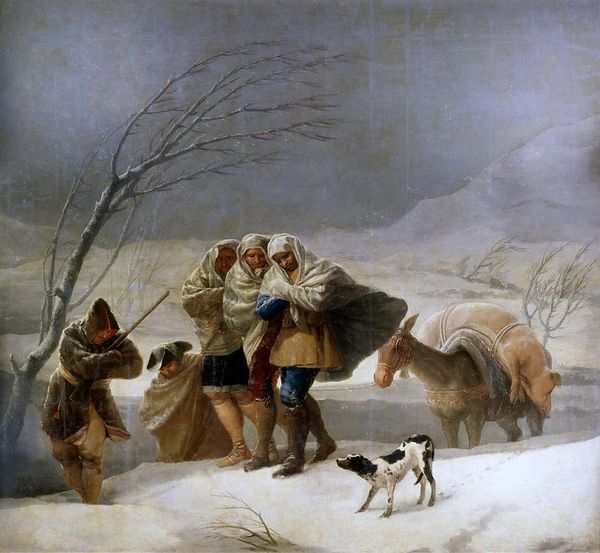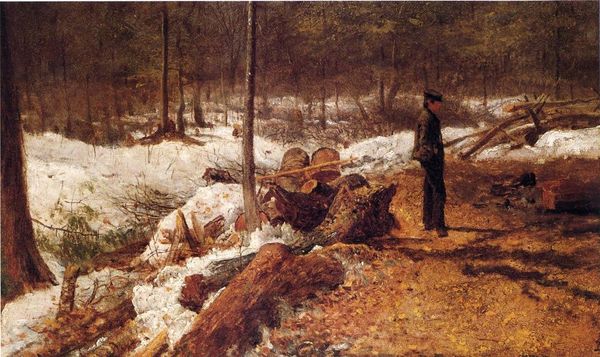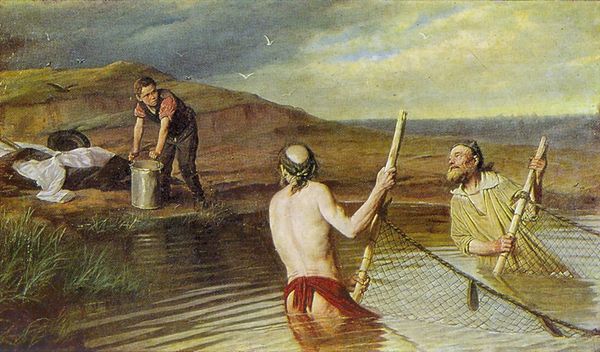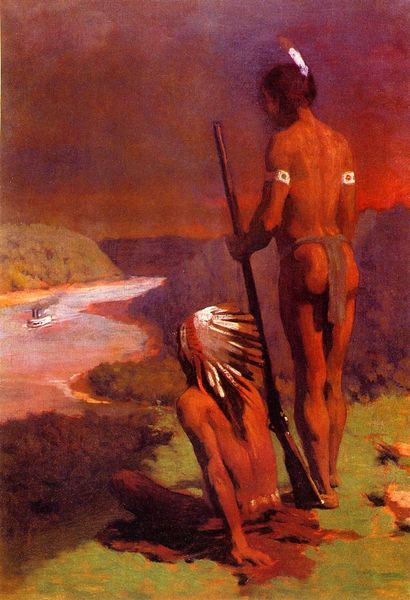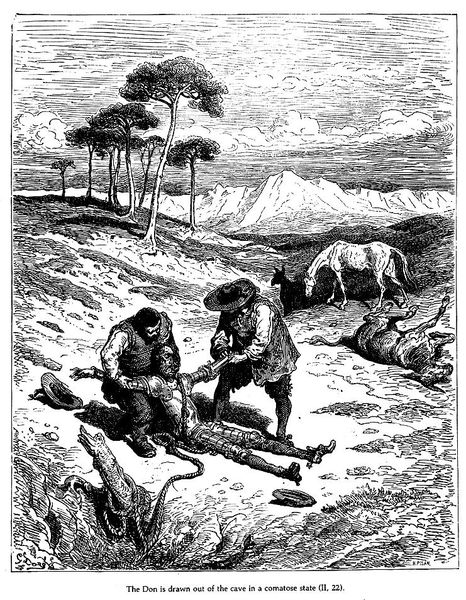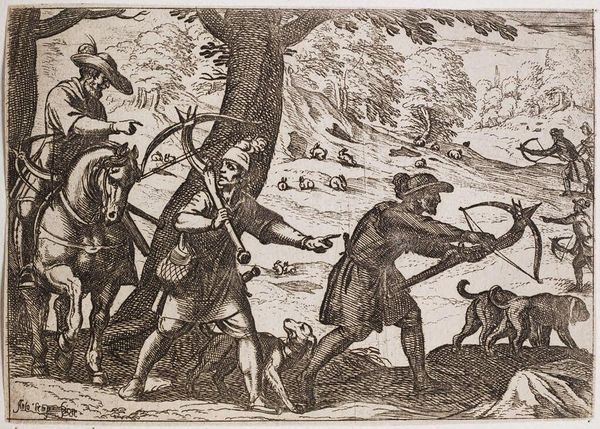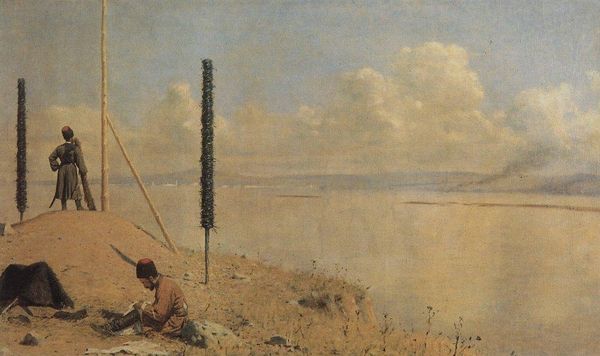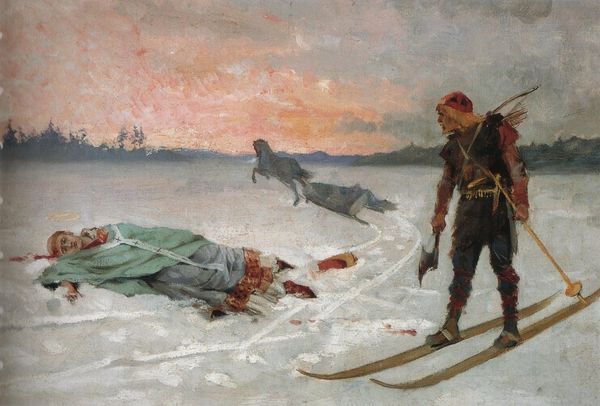
Poachers in the Snow 1867
0:00
0:00
gustavecourbet
Musée des Beaux-Arts et d'archéologie de Besançon, Besançon, France
Dimensions: 65 x 81 cm
Copyright: Public domain
Editor: Here we have Courbet’s *Poachers in the Snow*, painted in 1867. It's an oil painting, and it gives off such a stark, wintry feeling. I'm curious, what do you see as you engage with this particular canvas? Curator: What immediately strikes me is Courbet’s positioning of "Poachers" in the title. Considering his realist agenda, we must ask, were these figures poachers in reality, or is Courbet commenting on the poachers of his day – perhaps institutions or individuals who, in his eyes, exploited the "natural" order of art? The winter scene becomes less a landscape and more a political stage. Editor: That's a really interesting take! I hadn’t considered the title as having a deeper societal meaning. Do you think his use of the impasto technique reinforces this reading? Curator: Absolutely. Courbet's thick application of paint wasn't just about depicting texture. It was a defiant act, a rejection of academic smoothness that had previously dominated painting. It’s as if he's deliberately disrupting artistic "rules" just as poachers disrupt social order. Can you see any parallels between his artistic rebellion and the broader social upheavals of the time? Editor: Thinking about the era, the 1848 revolution comes to mind, with its push against established norms… So his rough style is a way to align with the common person? Curator: Precisely! He’s using paint itself to embody that spirit. And it makes you consider, who gets to define what’s ‘allowed’ – in art and in society. Editor: I never would have looked at it that way. Now the snowy landscape almost feels… rebellious? Curator: Indeed. That tension makes this seemingly simple painting so potent, as well as politically relevant to this day.
Comments
No comments
Be the first to comment and join the conversation on the ultimate creative platform.
